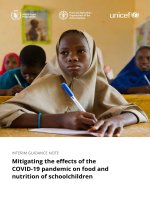On food and cooking the science and lore of the kitchen ( PDFDrive ) 239
Bạn đang xem bản rút gọn của tài liệu. Xem và tải ngay bản đầy đủ của tài liệu tại đây (122.68 KB, 2 trang )
plants,arerichratherthanstarchy.
Becausefatiscriticaltoanimallife,most
animalsareabletotakeadvantageof
abundantfoodbylayingdownlargestoresof
fat.Manyspecies,frominsectstofishtobirds
tomammals,gorgethemselvesinpreparation
formigration,breeding,orsurvivingseasonal
scarcity.Somemigratorybirdsputon50%of
theirleanweightinfatinjustafewweeks,
thenfly3,000to4,000kilometersfromthe
northeastUnitedStatestoSouthAmerica
withoutrefueling.Inseasonallycoldpartsof
theworld,fatteninghasbeenpartofthe
resonanceofautumn,thetimewhenwild
gameanimalsareattheirplumpestandmost
appealing,andwhenhumanspracticetheir
culturalversionoffattening,theharvestand
storingofcropsthatwillseethemthrough
winter’sscarcity.Humanshavelongexploited
thefatteningabilityofourmeatanimalsby
overfeedingthembeforeslaughter,tomake
themmoresucculentandflavorful(p.135).
HumansasMeatEaters
Meatbecameapredictablepartofthehuman
dietbeginningaround9,000yearsago,when
earlypeoplesintheMiddleEastmanagedto
tameahandfulofwildanimals—firstdogs,
thengoatsandsheep,thenpigsandcattleand
horses—tolivealongsidethem.Livestock
notonlytransformedinediblegrassandscraps
intonutritiousmeat,butconstitutedawalking
larder,astoreofconcentratednourishment
thatcouldbeharvestedwheneveritwas
needed.Becausetheywereadaptableenough
tosubmittohumancontrol,ourmeatanimals
haveflourishedandnownumberinthe
billions,whilemanywildanimalsarebeing
squeezedbythegrowthofcitiesand
farmlandsintoeversmallerhabitats,andtheir
populationsaredeclining.
TheHistory
ofMeatConsumption









